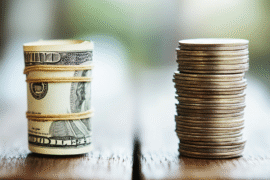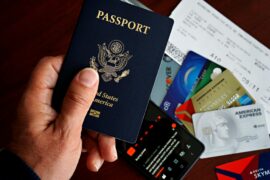One of the benefits of owning a credit card is having access to cash advances whenever you need them. If you find yourself in an establishment that does not accept digital or card payments, for instance, then the features of a cash advance credit card will do in a pinch. You can also do the same in case you’re heading to a remote holiday location where you’re unlikely to find an ATM for a stretch of several days.
This convenience, however, comes at a cost. Interest rates on cash advances are typically much higher than those for regular credit card purchases. They also start accruing immediately, often without a grace period. On top of that, there may be fees involved with each cash advance transaction. Because of these costs, cash advances are best seen as a last resort, used only when no other options are available.
If you find yourself relying on one, it’s essential to have a plan in place to repay the amount as quickly and efficiently as possible before the debt gets out of control. Below is a list of tips that will help you manage this type of debt and pay off any cash advance you’ve taken out on a credit card, for example, the Landers Cashback Everywhere Credit Card by Maya, in full as soon as possible:
- 1) Pay More Than the Minimum Amount
- 2) Create a Repayment Plan
- 3) Cut Down on Other Expenses
- 4) Use Extra Income for Payments
- 5) Avoid Taking Additional Cash Advances
- 6) Transfer Balances if Possible
- 7) Pay Off High-Interest Debts First
- 8) Automate Your Payments
- 9) Negotiate Lower Interest Rates
- Recommended Reads
1) Pay More Than the Minimum Amount
First off, one of the best things you can do when paying off a cash advance is to pay more than the minimum amount required each month. The minimum payment often only covers a small portion of the principal, with the rest going toward interest.
Paying more means that you reduce the principal faster, which also means you’ll pay less interest over time. Even a small increase in your monthly payment can significantly shorten the repayment period and reduce the total amount you’ll owe.
2) Create a Repayment Plan
Having a clear repayment plan is essential to managing your debt. Begin by calculating how much you owe on your cash advance, then break it down into manageable monthly payments that you can consistently afford.
Set a target date for when you want to have the advance paid off to keep you focused and motivated. Stick to this plan and adjust as necessary to ensure you’re making consistent progress.
3) Cut Down on Other Expenses
During the time you’re paying off your cash advance, it’s a good idea to reduce non-essential spending. Do this by reviewing your monthly budget and identifying areas where you can cut back, whether these pertain to dining out, entertainment, or shopping. The money you save can then be redirected toward paying off your cash advance.
4) Use Extra Income for Payments
Consider directing extra income such as a bonus, your 13th-month pay, or even side gig earnings toward your cash advance debt. A lump sum payment can significantly reduce your balance and lower the amount of interest that you’ll accumulate. Take advantage of any additional funds you have to make faster progress in paying off your debt.
5) Avoid Taking Additional Cash Advances
It can be tempting to rely on another cash advance to cover shortfalls while you’re still paying off your first one, but this can trap you in a cycle of debt. Each cash advance adds more interest to your overall balance, making it even harder to repay what you owe. Until you have completely paid off the existing advance, it’s best to avoid taking out any new ones to prevent deepening your financial burden.
6) Transfer Balances if Possible
Some credit card providers offer balance transfer options with lower interest rates or even 0% interest for a limited time. If you qualify, transferring your cash advance balance to a card with a lower rate can save you a significant amount of money on interest. However, be aware of any fees associated with the transfer, and aim to pay off the transferred balance before the promotional interest rate period ends.
7) Pay Off High-Interest Debts First
Cash advances often come with much higher interest rates than regular credit card transactions. If you have multiple types of debt, focus on paying off the cash advance first. Prioritizing this high-interest debt helps you keep the interest from accumulating, thus allowing you to become debt-free faster.
8) Automate Your Payments
One easy way to ensure that you never miss a payment is to set up automatic payments. This is especially important when paying off high-interest debts like cash advances, as missed payments can lead to late fees and even higher interest rates. Automating your payments gives you peace of mind, knowing that your bills will be paid on time without requiring your constant attention.
9) Negotiate Lower Interest Rates
Lastly, if you have a good payment history with your credit card provider, consider calling them to negotiate a lower interest rate on your cash advance. While it’s not guaranteed that they’ll agree, some companies may offer a lower rate as a one-time courtesy or as part of a retention strategy to keep you as a customer. Even a small reduction in the interest rate can make a noticeable difference in how quickly you can pay off your debt.
To avoid getting overwhelmed by a high-interest debt like this one, it’s crucial to have a repayment plan in place from the moment you take out a cash advance. Always consider how you’ll repay a cash advance before it gets out of hand to avoid experiencing unnecessary financial stress. The tips above can help you manage your debt in a sustainable way.
Become an Insider

Subscribe to get a free daily budget planner printable to help get your money on track!
Make passive money the right way. No spam.
Source Citation References:
+ Inspo












































